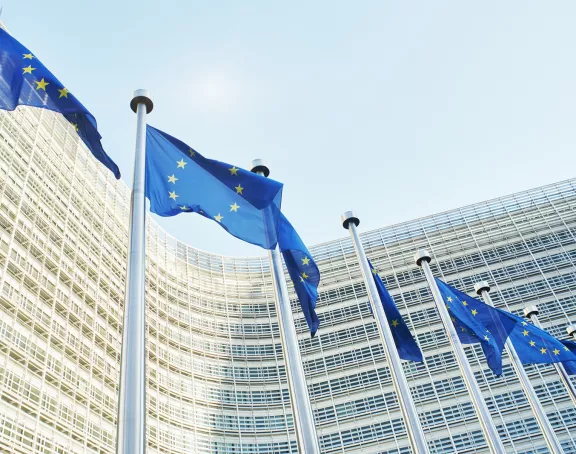Setting the Stage: the European Commission’s first in-depth FSR Decision
Although the FSR has been in force since mid-2023 already (see our July 2023 newsletter), guidance on its application was only summarily available so far. That changed considerably after the European Commission published its first-ever Phase II decision under the Foreign Subsidies Regulation (FSR). This precedent provides an enlightening insight into important substantive and procedural aspects of the FSR, the use of remedies to address regulatory concerns, and other relevant takeaways for EU-based companies that may face scrutiny under this regulatory tool, due to the receipt of financial support from third-country (or third-country-backed) entities.
Background of the transaction
On 4 April 2025 the Commission published its first-ever Phase II commitment decision regarding the acquisition of PPF Telecom Group (PPF) by Emirates Telecommunications Group Company PJSC (e&). e& is a telecommunications operator based in the United Arab Emirates (UAE). It is controlled and majority-owned by the Emirates Investment Authority (EIA), which is the UAE sovereign wealth fund, controlled and wholly-owned by the UAE government. The target company is the telecommunications business in Hungary, Bulgaria, Serbia and Slovakia of Netherlands-based PPF.
The transaction was notified under the FSR on 26 April 2024. An in-depth investigation was launched on 10 June 2024 and a commitment decision was adopted on 24 September 2024. The decision sheds essential light on (1) key substantive concepts; (2) the commitments that the Commission might deem appropriate; and (3) procedural takeaways.
1. Key substantive concepts
a. Foreign subsidy – the Commission unveils important takeaways regarding the attributability of a foreign subsidy to a third country as well as the conferral of a benefit
The Commission must first establish the presence of a foreign subsidy within the meaning of the FSR, before it can assess potentially distortive effects on the EU internal market. This decision clarifies how the Commission reviews specific financial contributions, such as the following:
- A term loan granted to e& by a consortium of banks comprised mainly of UAE-controlled banks did not constitute a foreign subsidy, as it did not in itself confer a benefit to e&. The Commission reached this conclusion by analysing the terms of the loan in light of the available information on the terms employed in comparable loan transactions, and found that the term loan was at market terms.
- The exemption by law of e& from ordinary UAE bankruptcy proceedings qualified as a foreign subsidy in the form of an unlimited guarantee. The Commission underlines the very distortive nature of this type of foreign subsidy, because the unlimited nature of the guarantee allows e& to be “more indifferent to risks”, thus conferring a benefit to it.
- Direct grants, loans and repayable advances granted to the EIA by the UAE Ministry of Finance were considered foreign subsidies. The Commission assumed the conferral of a benefit, as e& failed to provide sufficient information on the terms involved (see also below in 3.Cooperation is vital).
- A revolving credit facility loan to the EIA by a consortium of UAE banks also qualified as a foreign subsidy, as the actions of the mostly UAE-controlled banks were considered attributable to the UAE government. e&’s argument that merely being state-controlled does not justify establishing attributability was rejected. In doing so, the Commission considered the following factors: the ownership structure of those banks indicating that they are controlled by the UAE; the fact that the banks’ board members hold public offices in the UAE; and that those members can exercise decisive influence on the bank’s decision-making processes.
The above review shows that the Commission must corroborate the finding of a foreign subsidy with substantial economic and other evidence per financial contribution. In order to establish attributability, the decision indicates that the mere ability of a third-country government to decide on a private entity’s provision of a foreign subsidy suffices, thereby significantly broadening the FSR’s scope.
b. Distortion of the internal market – the Commission introduces a methodological assessment framework
When it comes to establishing that a foreign subsidy distorts the internal market, the decision sets out a clear step-by-step approach by conducting a preliminary test before applying the general distortion test.
The preliminary test
First of all, the Commission undertakes two preliminary steps before delving into the detailed distortion test.
- The Commission first assesses which economic activities of the recipient undertaking are likely to be affected by the identified foreign subsidy. This way, the Commission can distinguish which markets should be scrutinised for possible distortions.
- The Commission subsequently ascertains whether a foreign subsidy is likely to distort the internal market as per the categories listed in Article 5(1) FSR. Those likely distortive foreign subsidies include an unlimited guarantee, a foreign subsidy granted to an ailing undertaking, and a foreign subsidy directly facilitating a concentration. The decision reiterates Article 5(2) FSR that for these categories of foreign subsidies the Commission is not required to perform the detailed two-step-test set out below. Rather, it will be up to the notifying undertaking to rebut the legal presumption that the foreign subsidy distorts the internal market. As a result, companies that, for example, have received an unlimited guarantee should keep in mind that they carry the burden of proof regarding that guarantee’s compatibility with the EU internal market.
The general distortion test
After these two preliminary steps, the Commission conducts the general distortion test, consisting of another two steps. This test requires concrete evidence of factors such as the amount and nature of the subsidy, the conditions attached to its receipt, and the situation of the recipient undertaking, including its size and the markets or sectors concerned.
In this test, the Commission must prove that:
- the foreign subsidy is liable to improve the competitive position of the recipient undertaking in the internal market; and
- in doing so, actually or potentially negatively affects competition in the internal market.
It is noteworthy that the Commission distinguished between (i) the acquisition process of PPF; and (ii) the activities of the merged entity post-transaction in its distortion assessment. In this case, the Commission’s assessment focused on the second, particularly due to the foreign subsidies giving PPF more (preferential) access to financing post-transaction, which could distort the market for the provision of mobile telecommunications services. The probable underlying rationale for this distinction is that if a foreign subsidy does not benefit the recipient in acquiring another undertaking but remains available afterwards, it could still benefit the merged entity in its market conduct post-transaction and thereby disrupt the competitive processes on the market.
c. Balancing test – the Commission limits potentially relevant positive effects to those specifically incited by the foreign subsidies, whilst fully assigning the evidentiary burden to the notifying undertaking
After establishing the presence of foreign subsidies distorting the internal market, the Commission may assess whether the foreign subsidies give rise to positive effects that might outweigh the negative distortive effects.
This case showcases a number of important takeaways regarding the likelihood of successfully relying on the balancing test:
- It is up to the notifying undertaking to put forth any positive effects. If it fails to do so successfully, the Commission believes that it is under no obligation to look for positive effects itself.
- These positive effects must be brought about by the foreign subsidies, not by the transaction itself. e& summed up a number of synergies generated by the transaction. The Commission rejected those as irrelevant positive effects under the FSR’s balancing test, because it was the transaction rather than the foreign subsidies that generated the invoked synergies.
- The Commission emphasised that the negative distortive effects caused by likely distortive foreign subsidies (such as unlimited guarantees) are less likely to be outweighed by positive effects. Companies that, for example, received an unlimited guarantee are thus more likely to focus on proposing commitments rather than relying on the balancing test.
2. Commitments – the Commission shows flexibility when it comes to clearing the transaction
The decision shows that the Commission is willing to clear transactions, even if foreign subsidies of the most distortive kind have been received, if behavioural remedies are offered that adequately address its concerns.
In this case, the Commission accepted the following commitments:
- A commitment that e&’s articles of association no longer conflict with, disapply or override ordinary UAE bankruptcy law. This essentially removes the unlimited guarantee.
- A prohibition of any financing from the EIA and e& to PPF's activities in the EU internal market, subject to certain exceptions such as “emergency funding”, as well as the requirement that other transactions between those companies take place on market terms.
- A requirement that e& inform the Commission of future acquisitions that are not notifiable under the FSR.
These commitments are valid for ten years, with a possible extension of at least five years but possibly even longer. To ensure compliance, e& will appoint an independent monitoring trustee, subject to the Commission’s approval.
Companies should thus be aware that commitments may end up being burdensome and long-lasting. At the same time, these commitments show the Commission’s willingness to allow for a tailored approach in accepting commitments that effectively address the Commission’s concerns by ‘carving out’ the distortive effects of the foreign subsidies (e.g. in this case by amending e&’s articles of association). This flexibility presents companies with the opportunity of getting FSR clearance while preventing unnecessarily intrusive commitments or even redressive measures.
3. Cooperation is vital – the Commission does not shy away from attaching adverse procedural consequences to a lack of cooperation
To round it off, the decision shows that the Commission is not afraid to lash out at notifying parties that fail to cooperate. Non-cooperation can lead the Commission to take far-reaching decisions, such as a decision to prohibit a transaction or to impose redressive measures, solely “on the basis of the facts available”. Moreover, the Commission may assume the conferral of a benefit for the purposes of establishing a foreign subsidy if the notifying undertaking fails to provide the information necessary to make that determination.
Since this power is generally not used in traditional competition law, the question was how (and to what extent) the Commission would use it. The decision paints a clear picture: the Commission is not afraid to rely on this power. It has invoked it both for assuming the conferral of a benefit regarding the direct grants, loans and repayable advances granted to the EIA by the UAE Ministry of Finance when e& failed to respond adequately to multiple requests for information, and (in part) for finding a distortion of the EU internal market again after requests for information were insufficient.
Companies should thus be aware that refusing to fully cooperate may seriously reduce their chances of obtaining FSR clearance. The FSR explicitly states that the outcome of the procedure may be “less favourable” for non-cooperating companies. Rather, ensuring a smooth and transparent dialogue with the Commission right from the get-go could increase the likelihood of a successful outcome.
Conclusion
The commitment decision could serve as an important precursor for the additional substantive guidance on the concept of distortion of the internal market and the balancing test to be adopted early-2026. For the time being, the following key points of the commitment decision should be kept in mind:
- Companies should be aware that the FSR procedure can be burdensome and that they may face quite some regulatory headwind.
- The decision shows a great deal of economic evidence. To make a convincing legal argument, substantiating economic analysis is advisable.
- In its assessment, the Commission not only focuses on the acquisition process itself, but also on the activities of the merging parties post-transaction. Especially if foreign subsidies continue to be available after the transaction, regulatory interest is to be expected.
- Even so, the Commission shows flexibility when it comes to clearing the transaction by accepting tailored commitments to address its concerns. To ensure a smooth and successful regulatory procedure, it is therefore advisable for companies to cooperate fully and adequately submit information.


